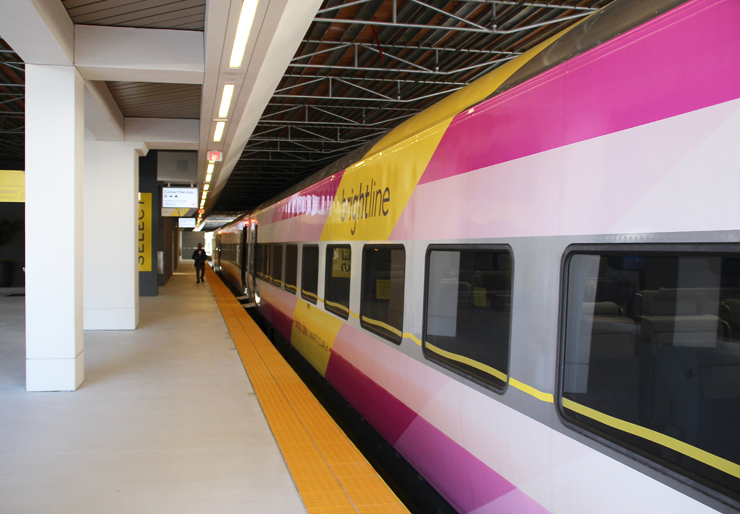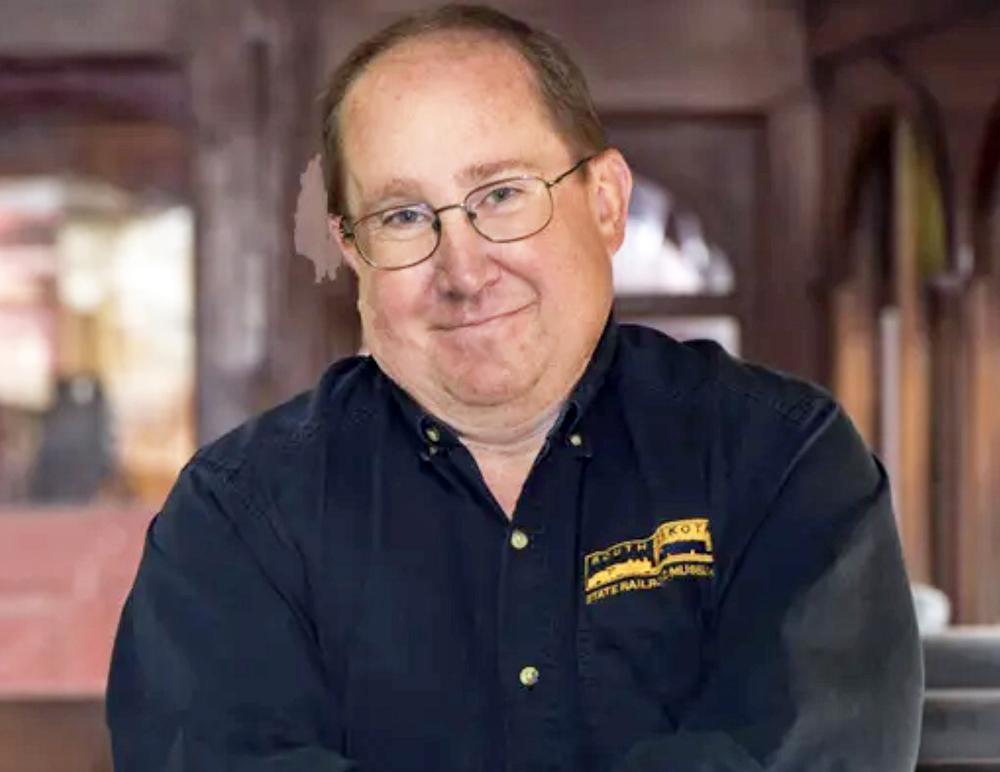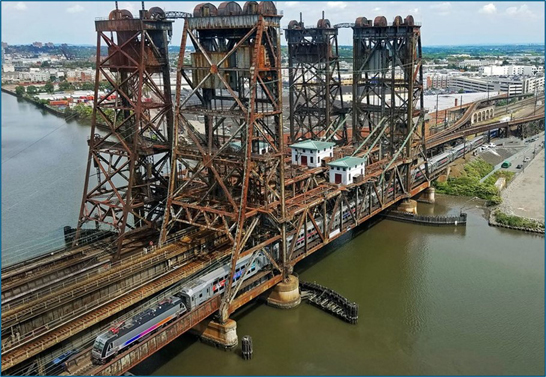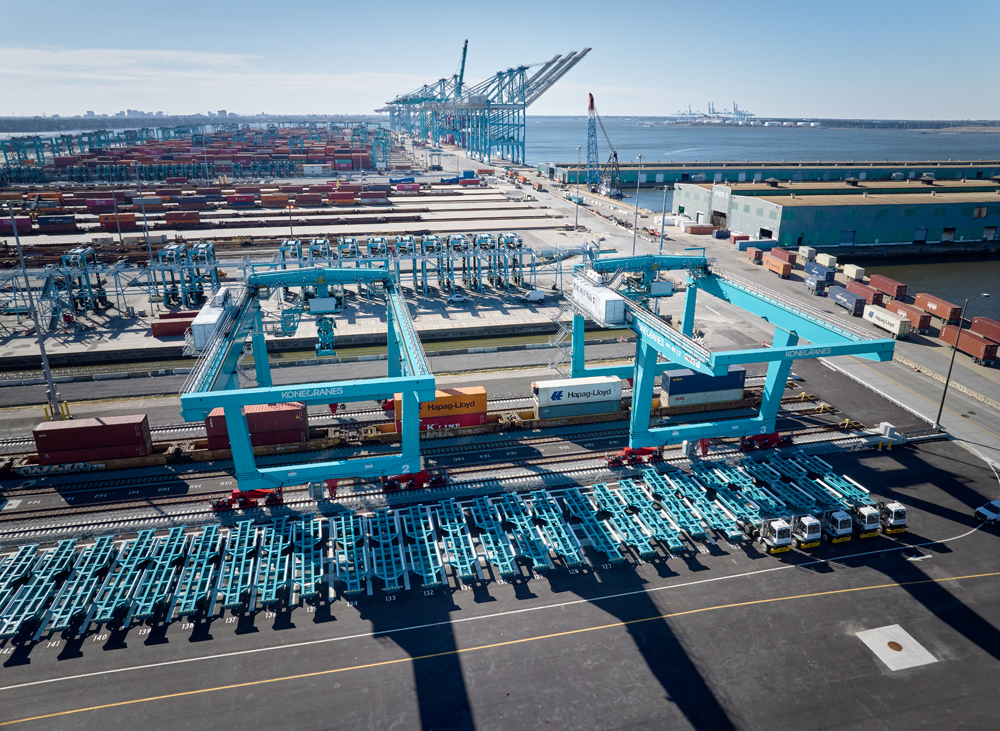WASHINGTON — Amtrak has released a Request for Proposals seeking new single-level equipment to replace Amfleet I cars on the Northeast Corridor and adjacent state services.
According to a press release issued late Friday afternoon, the new equipment will be bidirectional, meet federal standards for operation at up to 125 mph, meet accessibility standards under the Americans with Disabilities Act, and include all equipment required for positive train control operation. Amtrak also says the new equipment will include large windows, improved climate control systems, improved seating and wi-fi, weather-tight doors and vestibles, and new designs for restrooms and passageways between cars.
The deadline for proposals is March 15, 2019, according to Amtrak’s procurement website. The passenger carrier says it could accept one or more proposals.
The equipment will replace Amtrak’s 470 Amfleet I and ex-Metroliner cars; the Amfleet cars are over 40 years old, while the ex-Metroliner equipment entered service 50 years ago this week for Penn Central.
State-supported Amtrak services in California and the Midwest have already ordered new single-level cars from Siemens, based on the cars in use on Florida’s Brightline. [See “Siemens to build next generation passenger cars,” Trains News Wire, Nov. 9, 2017.] That 137-car order replaced an order for 130 bilevel cars, placed in 2012, that fell apart when Nippon Sharyo was unable to produce a car which could meet the order’s structural requirements. [See “Expensive questions surface with changed passenger car order,” Trains News Wire, Nov. 9, 2017.]
In December, VIA Rail Canada also ordered new single-level corridor equipment requiring bidirectional operation. Siemens will also build that equipment. [See “VIA Rail Canada, Siemens announce deal for new corridor equipment,” Trains News Wire, Dec. 13, 2018.]















Not stated in the article, but a good idea, would be to maintain the best of the cars for use in peak periods and special trains, if there are any. Also, an equal number of cars could be kept for potential canibalization of parts to keep the remaining operable cars operable.
The Amfleet cars are descended from the Pioneer III cars of 1956 and the Metroliner EMU’s of 1967 (still running as cab cars). Back then polycarbonate (Lexan) glazing had not been developed and the kids had started throwing rocks at the trains. The windows are small to give the kids a small target.
I agree with Brother Pins on the converted 21-roomette sleepers. Budd managed to pair half the seats with windows but the other half had no windows. As Penn Central rolled along, the cars got Lexan glazing but the first generation was not scratch resistant and what windows there were became translucent rather than transparent. Then the electrical systems and air conditioners failed. Everybody was happy to see the Amfleet cars with working lights and A/C. The fact that they can run at modern speeds (125 MPH) and still give a good ride is amazing.
The Swiss trains do a good job. 4 facing seats at a table. Makes it more comfortable if stuck riding backwards.
The Amfleet equipment that Amtrak is now looking at replacing is older (40 years+) than much of the equipment Amtrak inherited at start-up in May 1971 from private railroads.
I wonder if Amtrak has figured out how to pay for, or has somehow has budgeted funding for the Amfleet equipment replacement. With 470 Amfleet (1) cars in the fleet to replace, it won’t be cheap ….
Rotating seats would be awesome. Does anyone know why there aren’t more of these? Is it crash-safety related? I remember riding the High Speed Rail lines in China and watching as the car attendants worked their way through the trains turning the seats around at the end of the line. It was so fast and efficient and allowed the cleaning staff to vacuum the entire floor area.
My biggest gripe about most new rail cars is the “sickening” trend to go with fixed seats and require half of us to ride backwards. Even the new Avelia is going to require 50% of the passengers to ride backwards at 160 mph! I only hope that any Amfleet replacement will have rotating seats but I am not holding my breath.
One option would be buy more or longer high speed trainsets and end the distinction between Acela and regular trains. That’s how it is in France: where high speed is available there are no other trains running the same schedules (exception: conventional overnight trains covering the same geography as daytime high speed trains). But France built new alignments on which conventional trains do not run, so making that option less likely. Still, if you could handle regular passengers in “economy class” on regular acela trains, the cost savings seem clear.
Mr. McGuire – Depends on what’s in the “what they replaced” group. Those pockmarked, rough-riding coaches rebuilt years before from sleepers, where the windows didn’t line up with the seats? Absolutely. The “Congo” cars (the Budd equipment built in the fifties for the Congressional and the Senator) ? No way. The last few P70’s? I thought they had the best ride of all, and always sat in one if it was in the consist.
From what I have observed most passengers could not care less about the size of the windows or even if there are any windows at all. They are too busy on their phones, tablets and laptops to care about the passing scene. For my taste, Amfleet is far superior to what they replaced particularly in the NEC
True, they were “steel tubes with tiny windows” as Michael Fowler has described them, but would that many things would hold up as well in their lifetimes as Amfleet cars have. They must have exceeded their designers’ expectations, which was good for us because we didn’t a lot of alternatives.
Other than the small windows (Amfleet 1) this seems to have been pretty good equipment for its era.
Here in the Midwest we’re more likely to see the Amfleet 2.
My impression based on whatever it’s based on is that Amfleet has been the least of Amtrak’s problems.
Second the motion. Seems like a good idea to retain the old fleet, and finally have enough coach equipment for heavy travel periods and New Haven to Hartford, but anything is possible. Could be “too old, too expensive to maintain, etc.”
Would love to finally get rid of these steel tubes with tiny windows that have been a staple of the NEC for most of my life.